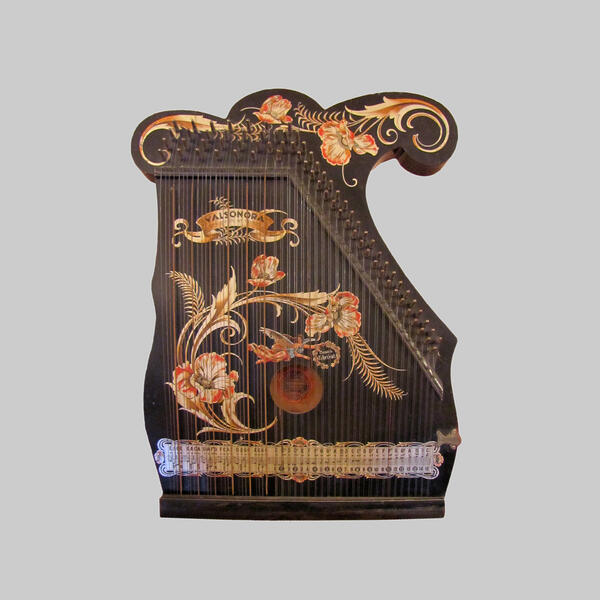Zhorzhina and Vasily Chicherin encouraged children to enjoy music. Especially for that, the parents bought several instruments in the spacious estate: a grand piano, a piano, a zither, a violin and a flute. The home library was also regularly replenished with books on musical history and theory, with music sheets and librettos. In addition, the mother and father periodically organized family ‘concerts’ in the living room, in which the sister and brothers participated.
The eldest son Nikolay preferred the flute and the violin, the younger son George - the piano and the grand piano. At a young age, he tried to compose musical compositions on religious themes. This was not surprising, since both boys were admirers of the work of Wolfgang Mozart. In their rooms there were portraits and even a bust of the Austrian composer.
The only daughter Sophia chose zither for playing music. Unknown craftsmen created a lacquered model in the early 20th century and decorated it with multi-colored images. The front panel clearly shows: a winged girl and floral patterns, as well as the name of the Valsonora brand and the company number.
In all other matters the plucked instrument of the young lady had characteristic features: an asymmetrical and flat body made of wood, over which up to 45 strings were stretched. In order to achieve the best sound, the performer had to place the zither on her lap or on the table, and then pluck the strings with a plectrum worn on her finger. The melody was based on the extreme strings with metal frets, the rest were used for chord accompaniment.
Let us remind you that analogues of zither have been found in many cultures for a long time. In different countries they are known as kifars, shaitholtsy, cheter and others. Art historians have discovered the earliest depictions of chordophonic instruments in Ancient India and Ancient China.
There are several cases in history when ‘chordophones’ went in and out of fashion, gained and lost popularity. For example, in tsarist Russia, zithers were in demand for both salon and concert performances, but in Soviet Russia they were not, since they were associated with ‘aristocracy’ and criticized luxury.
The eldest son Nikolay preferred the flute and the violin, the younger son George - the piano and the grand piano. At a young age, he tried to compose musical compositions on religious themes. This was not surprising, since both boys were admirers of the work of Wolfgang Mozart. In their rooms there were portraits and even a bust of the Austrian composer.
The only daughter Sophia chose zither for playing music. Unknown craftsmen created a lacquered model in the early 20th century and decorated it with multi-colored images. The front panel clearly shows: a winged girl and floral patterns, as well as the name of the Valsonora brand and the company number.
In all other matters the plucked instrument of the young lady had characteristic features: an asymmetrical and flat body made of wood, over which up to 45 strings were stretched. In order to achieve the best sound, the performer had to place the zither on her lap or on the table, and then pluck the strings with a plectrum worn on her finger. The melody was based on the extreme strings with metal frets, the rest were used for chord accompaniment.
Let us remind you that analogues of zither have been found in many cultures for a long time. In different countries they are known as kifars, shaitholtsy, cheter and others. Art historians have discovered the earliest depictions of chordophonic instruments in Ancient India and Ancient China.
There are several cases in history when ‘chordophones’ went in and out of fashion, gained and lost popularity. For example, in tsarist Russia, zithers were in demand for both salon and concert performances, but in Soviet Russia they were not, since they were associated with ‘aristocracy’ and criticized luxury.



